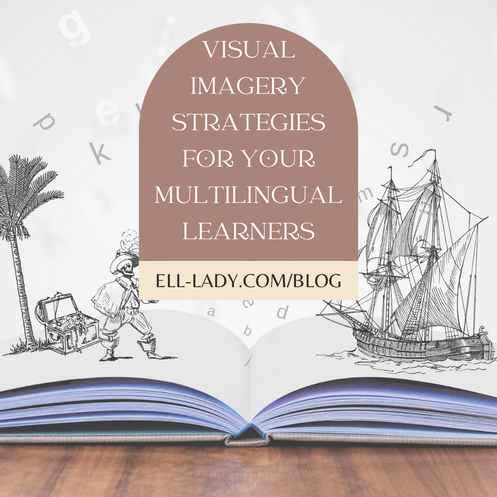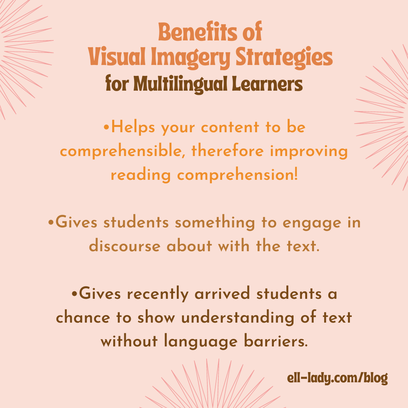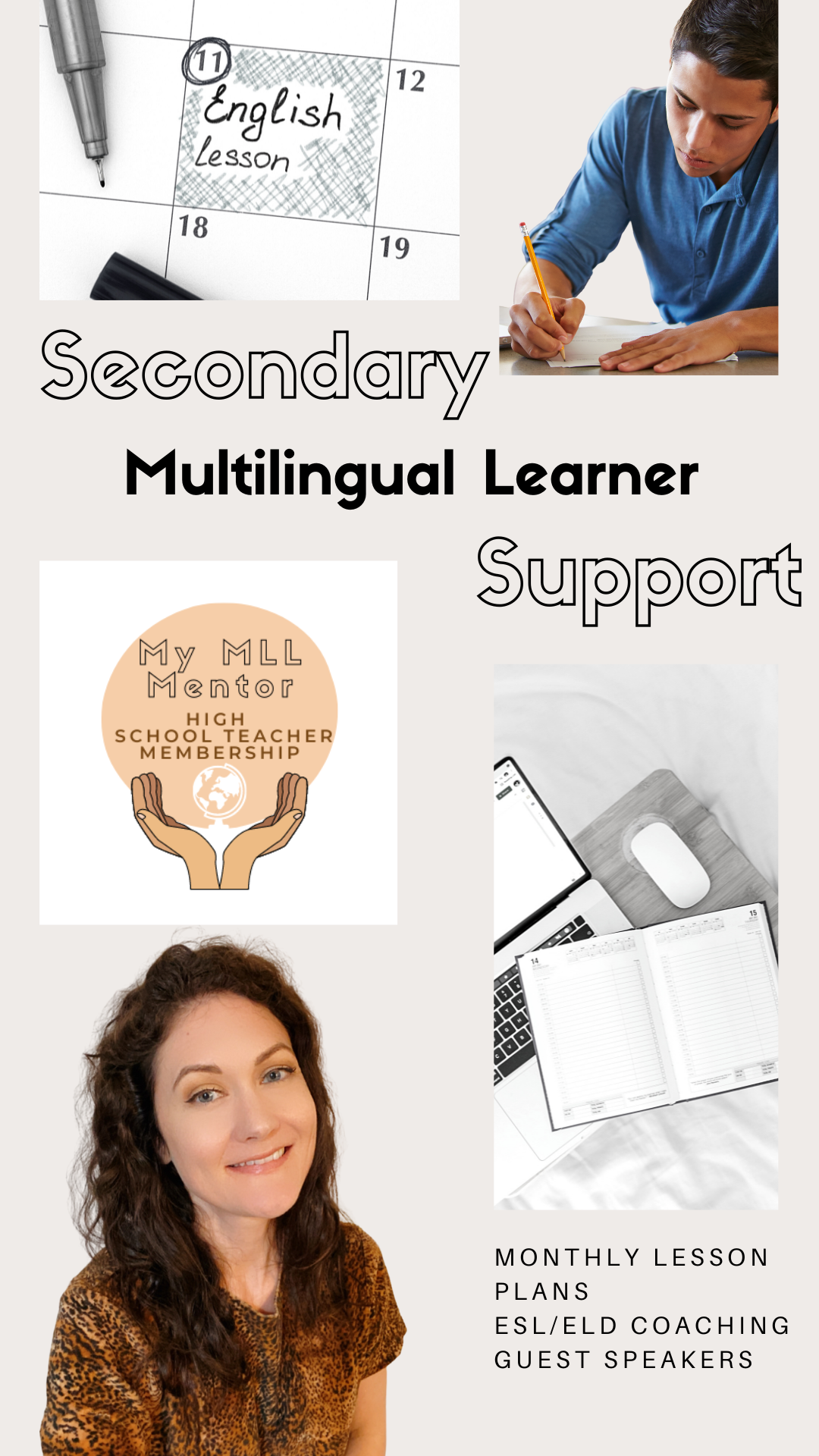|
Making things visual is a must for English learners, or multilingual learners. It is the simplest, easiest scaffold to implement to help your content be comprehensible. According to Reading Pictures for Story Comprehension Requires Mental Imagery Skills, it has repeatedly been shown that readers learn and understand more from a text when pictures are added, which has been referred to as the “multimedia effect” (Mayer, 2002b; Schnotz, 2002; Schnotz and Bannert, 2003; Schüler et al., 2015).
Here are some strategies that are so easy to implement and really help to create mental images while reading. They also integrate all of the language domains- speaking, writing, reading, and listening. You can take them and use them tomorrow in your own ESL class or other content areas with your multilingual learners. But first, I have to be honest- I can't take credit for these two reading comprehension strategies. Liz Mangus from Saddleback Educational Publishing joined us in our high school teacher membership, My MLL Mentor, to chat about reading comprehension and multilingual learners. Here is a short recap about our chat! If you are interested in becoming a member to check it out in its entirety and see what else our membership offers, check it out here! What is Reading Comprehension? There are many pieces to the reading comprehension puzzle. It's not just about using those reading comprehension strategies like making predictions, comparing and contrasting, and making inferences. Not only do successful readers make images as they read, but they also about have the ability to decode and have background knowledge to understand what information is being decoded. All of that combined can be added to our reading comprehension puzzle. One thing that ESL teachers should be intentional about is building background knowledge because although our multilingual learners bring many assets into our classrooms, they may be missing some background information needed in order to comprehend what's being taught in American schools. Simple ways to build background knowledge may be to add visuals or show videos, but the more relevant we can make it, the better. Carol Salva talks a lot about bringing in guest speakers to her classroom and interviewing them to make that background even richer! Bonus points for bringing in speakers to the classroom that speak your student's first language to really embrace a translanguaging classroom! An additional piece of the comprehension puzzle is oral proficiency. According to Timothy Shanahan and Christopher Lonigan in Language Magazine, "children’s oral language skills serve as the foundation for both aspects of reading ability-word reading and language comprehension." What does this mean? It means that speaking and reading are connected when it comes to reading comprehension. More specifically, speaking is a foundation for reading! With this in mind, we as ESL teachers can be mindful and intentional about building in speaking opportunities for oral English development. We definitely want our students to SWRL (speak, write, read, listen) in every lesson. I try to do this in every lesson I create for our member's monthly lesson plans! Check out an example here! Skimming The first strategy that Liz and I chatted about was skimming. This isn't just your regular skimming of the text, but it involves adding in sticky notes with questions and sketches, and integrating some speaking of course! First, students pick a book to skim with. If you have recently arrived students, pictures with books are best (but not little kid picture books if you are working with middle or high schoolers- hi-lo readers like Saddleback's are the best!). Have students skim through the book and answer the following questions on a sticky note (one per sticky note). Recently arrived or expanding/intermediate students could answer with a sketch and a sentence frame or stem, but I recommend to have all students add in sketches to help create mental images as they are skimming.
After they answer, they stick them at the part of the book where they found the information. Then, they can interview a partner and learn about their book! The benefits of this strategy is that not only are they getting motivated about reading their own book, but they are practicing speaking and getting information about their partner's as well (and hopefully want to read that book too!). Get the Picture This strategy might be my favorite because I am a fan of any strategy that involves sketching, doodling, and any kind of art integration! Allowing students to draw is a wonderful scaffold for our recently arrived students. And this strategy isn't just a quick sketch on a sticky note; it's using drawings to create whole scenes from stories. Here's how it works:
And there you have it! Try out these fun reading strategies with your ELLs/MLLs tomorrow! Your creative students will appreciate you and your not-so-creative will at least have a laugh! There are more awesome strategies in Saddleback's Hi-Lo Book Comprehension Strategies Guide, and the whole interview with Liz including other strategies can be listened to inside of our high school teacher membership. Got a favorite reading strategy to share? Comment below!
0 Comments
Leave a Reply. |
AuthorI support middle and high school teachers through monthly lesson plans, coaching, and guest speaker offerings in our Secondary ESL Teacher Membership. Archives
April 2023
Categories
All
|



 RSS Feed
RSS Feed
